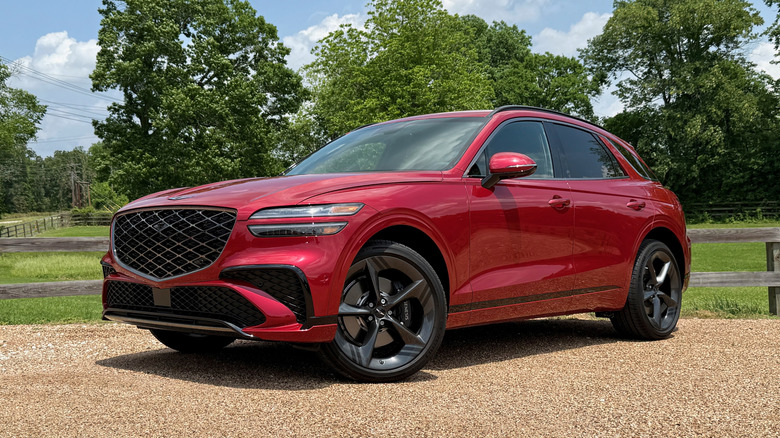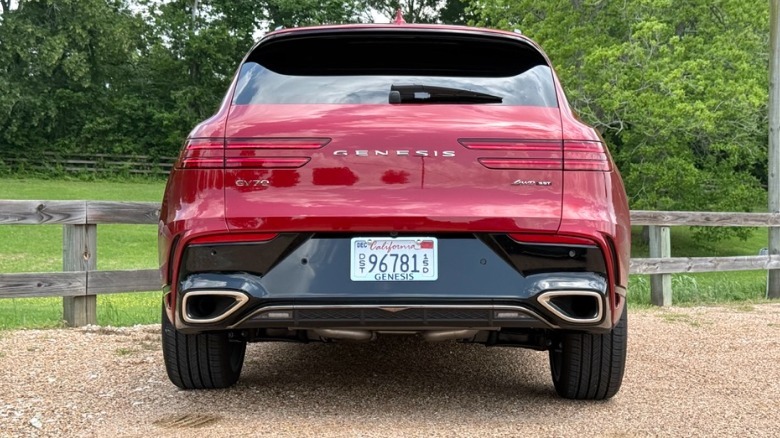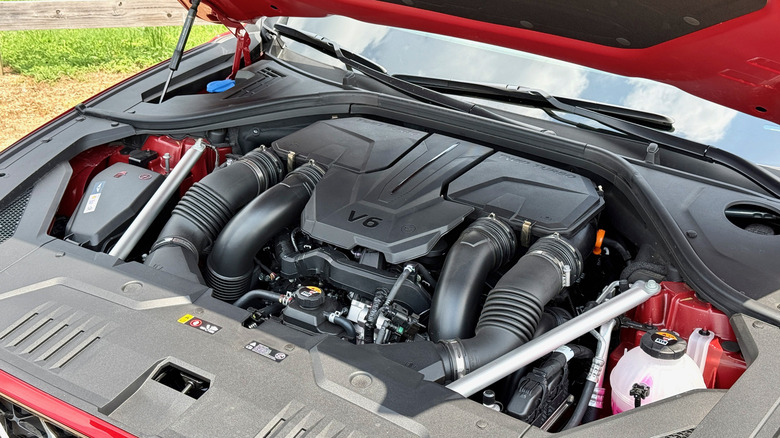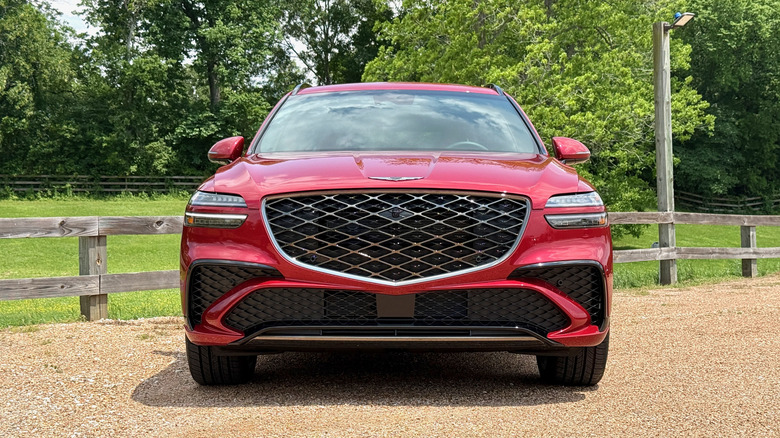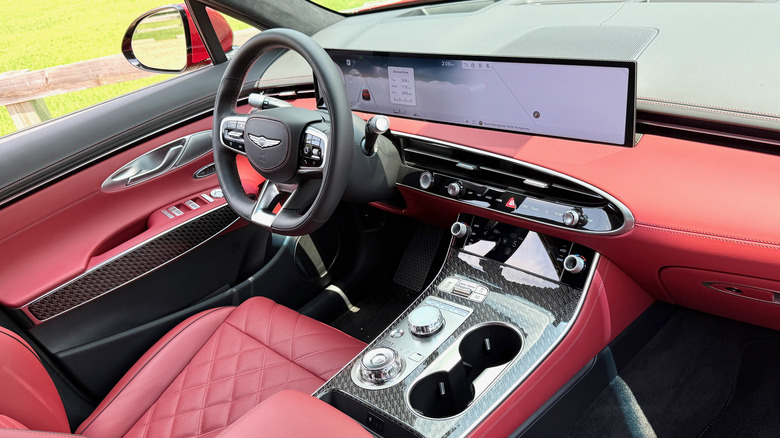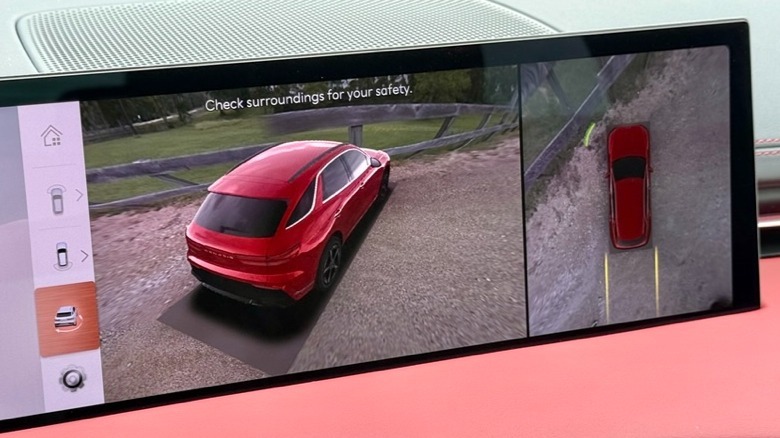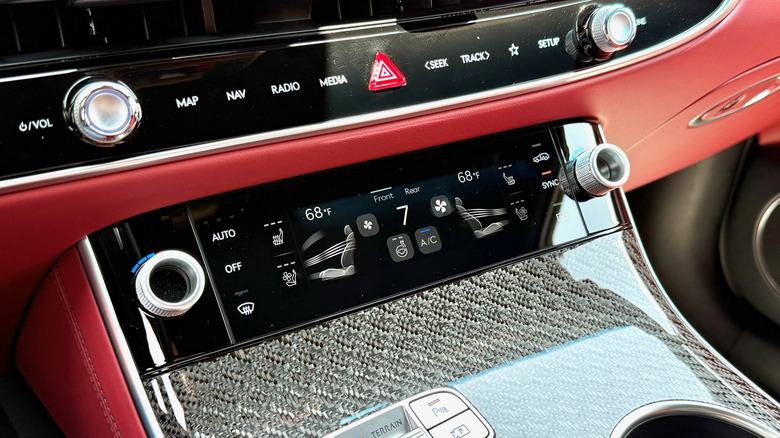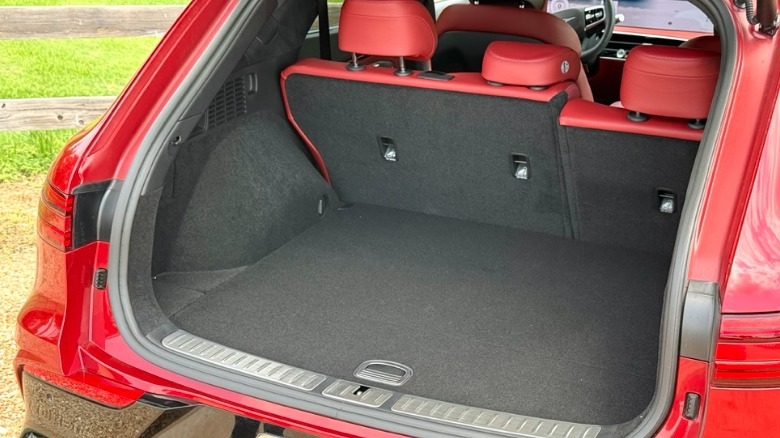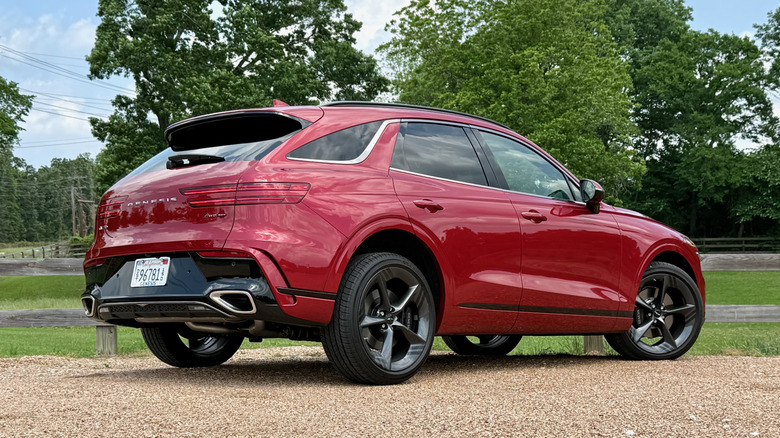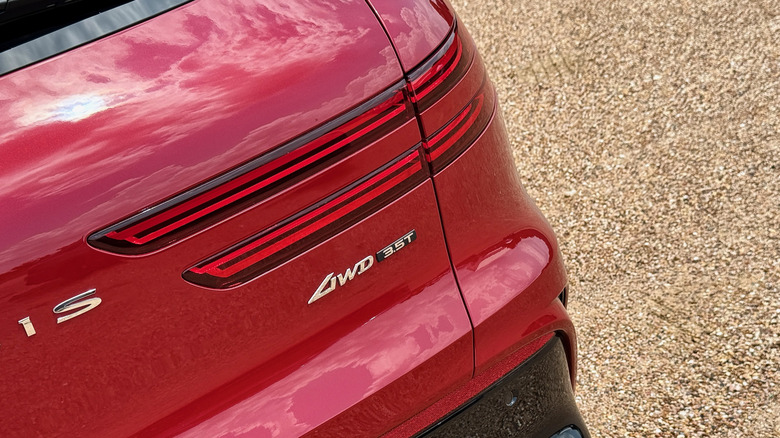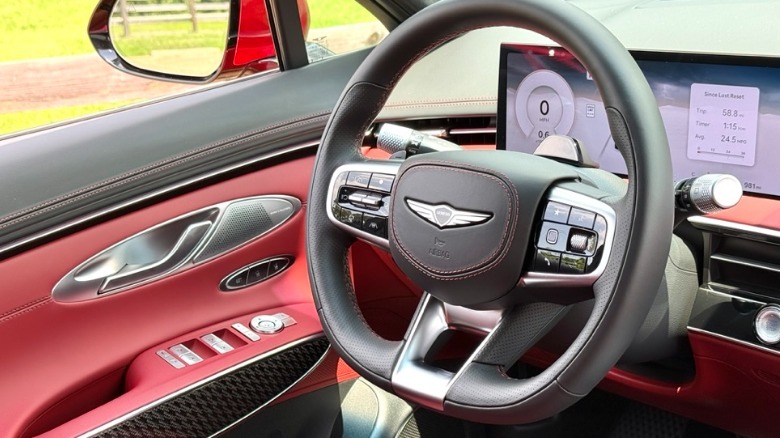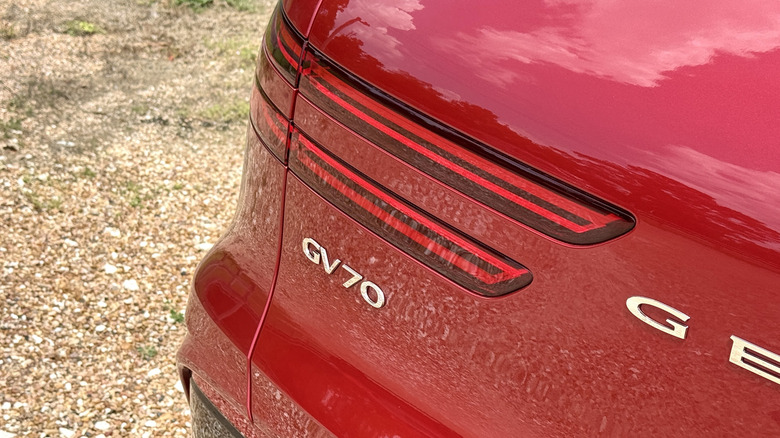2026 Genesis GV70 First Drive: The Upgrades That Matter
Genesis is a young brand by car-industry standards. There were some Genesis-branded models in Hyundai's lineup a while back, but about 10 years ago, the two nameplates hit a fork in the road and Genesis set off on its own path. In the decade since the split, Genesis has launched a number of impressive cars and SUVs, establishing themselves as a top choice for value-packed luxury vehicles. And right in the middle of their plush SUV lineup sits Genesis' compact SUV, the GV70, which has been refreshed for 2026 with new looks and new tech. Genesis is calling it a "complete redesign" but it's more like a makeover than a full transformation.
Up front, the 2026 GV70 gets new headlights, a new grille, and a new lower fascia. Out back, the rear fascia is also updated along with new tail lights and new exhaust tips (the big-circle exhaust tips from the previous-gen GV70 are no longer part of the design language). A new 27-inch screen stretches across the dash of the GV70, a display it shares with several other Genesis products like the plush G90. Sounds like a proper glow-up to us. Genesis invited us out to Houston, Texas to drive the new GV70 and test out its new tech interface, and the updated SUV didn't disappoint.
No changes necessary for the 2026 GV70's powertrain
Before we talk about the GV70's updated tech, let's go over what it's like to drive. Getting underway in the GV70 is a breeze. The base engine is a 2.5-liter four-cylinder that puts out 300 hp and 311 lb-ft of torque. My test car, however, was the 3.5T Sport Prestige trim — the top model in the GV70 lineup — powered by a twin-turbocharged 3.5-liter V6. It puts out 375 horsepower and 391 lb-ft of torque.
That's more than enough to move the GV70 onto any highway on-ramp in a hurry and Genesis has even seen fit to equip it with a launch mode. Pull over, switch into Sport Plus mode, press and hold the traction-control button, mash the brake, then go full throttle: the GV70 will rev up to about 1,800 rpm and when you release the brake it heads for the horizon.
The shifts from the eight-speed automatic transmission are quick but not very smooth in launch mode: they're a bit jerky in their pursuit of faster acceleration. When you're not playing the role of SUV drag racer, though, the V6 is still a likable powertrain. The shifts are much smoother in Sport and Comfort mode. In the two Sport modes, the piped-in engine noise throughout the cabin is a bit off-putting too, so I found myself driving in Comfort most of the time. The V6's noises aren't particularly evocative and amplifying them makes the interior experience less refined.
Driving engagement and comfort
Driving the GV70 through the back roads of Houston was an experience mostly defined by straight lines and two-lane highways. Sure, some concrete highways and a few curves along the b-roads made their way onto our drive route, but there weren't any twisting mountain roads to explore. That meant there wasn't much of a chance to test out the steering and handling capabilities of the GV70.
In the spaces where I could drive around a corner with some momentum, though, the GV70 did well. It felt planted, flat, and capable enough to be entertaining on winding tarmac that Houston didn't seem to have much of. Steering, across all of the available modes, felt a bit heavy and artificial, but that's not entirely surprising for the class. Pushing aside that small complaint, the GV70 was a comfortable chariot for the day of driving.
The electronically-controlled suspension fitted to the top two trims (Sport Advanced and Sport Prestige) employs a feature called Road Preview to track the road surface ahead and automatically adjust the suspension settings. The ride quality on the GV70 was comfortable, and this sensor-based ride quality adjustment sounds pretty cool, but without testing two versions of the same vehicle out back-to-back, it's hard to say whether it makes a definitive difference.
New screen is the star
One of the big updates for 2026 is on the inside of the GV70. It's the massive 27-inch dashboard display that's equipped on several Genesis models these days. The singular dashboard display stitches together the driver display and the center touchscreen, giving the dash a wonderfully upscale look and feel. The screen is standard on every trim of the 2026 GV70, so even base 2.5-liter models get the classy vibe. On top of being visually pleasing, the screen is relatively easy to use with simple menu structures.
The center console houses some duplicate physical buttons and a rotary knob that can also control the screen, but the rotary knob has an inconvenient next door neighbor: the drive selector. More than once in this GV70 (and in other Genesis products I've tested recently, like the G80), I've gone to change from Drive to Reverse and ended up scrolling through the touchscreen controls. Or, the opposite happens: my hand ends up on the screen controls when I'm trying to shift out of park. These two controls are too similarly sized and too close together for my liking, a drawback in an otherwise functional interior.
Premium interior quality
Like a number of other Genesis models, the GV70 has an impressive cabin. Materials in most of the high-traffic areas feel high quality; the center console, the armrest on the door, and even the buttons on the steering wheel feel sturdy and well constructed. There are some hollow plastics to be spotted in some areas, and a few shiny piano-blacks, but nothing too offensive or intrusive.
The diamond-pattern stitching on the seats along with the bright red upholstery are a bold interior choice but in my opinion, the combination works well. The front seats felt supportive, well-bolstered, and comfortable to sit in throughout our full day of test driving; I only sat in the rear seats momentarily, but I got the impression that they'd be just as good on any road trip.
Along with the upgraded screen for 2026, the GV70 now gets wireless Apple CarPlay and Android Auto connectivity, a feature that was missing the last time we reviewed a GV70. Connecting to the interface was easy and there weren't any drop outs in connection over the course of the test. For audio, Genesis has switched from using Lexicon stereo components in their premium GV70 models to using Bang & Olufsen instead. The stereo still uses 16 speakers and at full volume, I couldn't detect any distortion, so there doesn't seem to be any loss in quality there.
Undercutting rivals
A significant part of the appeal with the GV70 is its pricing. Several competitors have bigger price tags, so there's some serious value in undercutting those rivals and where that happens the most is at the bottom of the trim-level ladder. Base trim levels of the GV70 have an MSRP of $49,435 (including $1,450 destination fee) and standard equipment includes the 2.5-liter engine, wireless smartphone connectivity, a wi-fi hotspot, dual-zone automatic climate control, heated front seats, adaptive cruise control, the big 27-inch landscape-style screen, and a 9-speaker stereo.
That undercuts luxury SUVs like the newest Audi A5 and the 2025 BMW X3 by a few thousand dollars, and slides in just below luxury SUVs like the Mercedes-Benz GLC. Compare the GV70 to something like a base-trim Porsche Macan, though, and there's a difference of over $10,000. It's also worth noting that the GV70's base 2.5T powertrain outguns the base engines from German rivals.
It has the options, if you're willing to pay
On top GV70 trims, prices rise significantly and are more in line with legacy luxury brands. Thankfully, there's a lot of equipment to go along with the bigger sticker. Above the base 2.5T trim level there's Select, Advanced, and Sport Prestige. The 2.5T Select ($52,335) adds features like a wireless phone charger, a power-adjustable steering wheel, and memory seats. The 2.5T Advanced ($56,885) adds ventilated front seats, a heated steering wheel, leather upholstery, a surround-view monitor, parking aids, and the Bang & Olufsen stereo. The 2.5T Sport Prestige ($60,245) has tri-zone climate control, and a second-row AC outlet, along with 21-inch wheels on the outside.
Where things really get going upward is with the V6. The 3.5T powertrain is available only in Sport Advanced and Sport Prestige trims. The 3.5T Sport Advanced trim ($64,865) includes most of the 2.5T's available equipment along with the upgraded engine and the electronically controlled suspension. The 3.5T Sport Prestige ($71,545) is significantly more expensive, but it does add real upgrades like a head-up display, a limited-slip rear differential, and heated rear seats. Still, the best value in the GV70 lineup is probably the 3.5T Sport Advanced.
2026 Genesis GV70 Verdict
Despite the brand's youth, Genesis continues to impress in an upscale and competitive class. The refreshed styling and the interior upgrades on the 2026 GV70 make things even better than they were on previous iterations, and do nothing but add to the overall appeal. It's no surprise, then, that the Genesis GV70 is the brand's most popular vehicle: according to a Genesis representative, about 35% of all the brand's U.S. sales are GV70 models.
If you're looking for a luxury SUV that offers power, performance, and a plush interior, that's exactly what you'll get with the 2026 Genesis GV70. Rivals like the BMW X3, Audi Q5, and Porsche Macan are typically more expensive, especially on upper trims and when you start selecting options. They do, however, offer more driving engagement than the GV70 does. Depending on which trim level you go with and what rival you're considering, the GV70 continues to offer good value and top-tier refinement.
